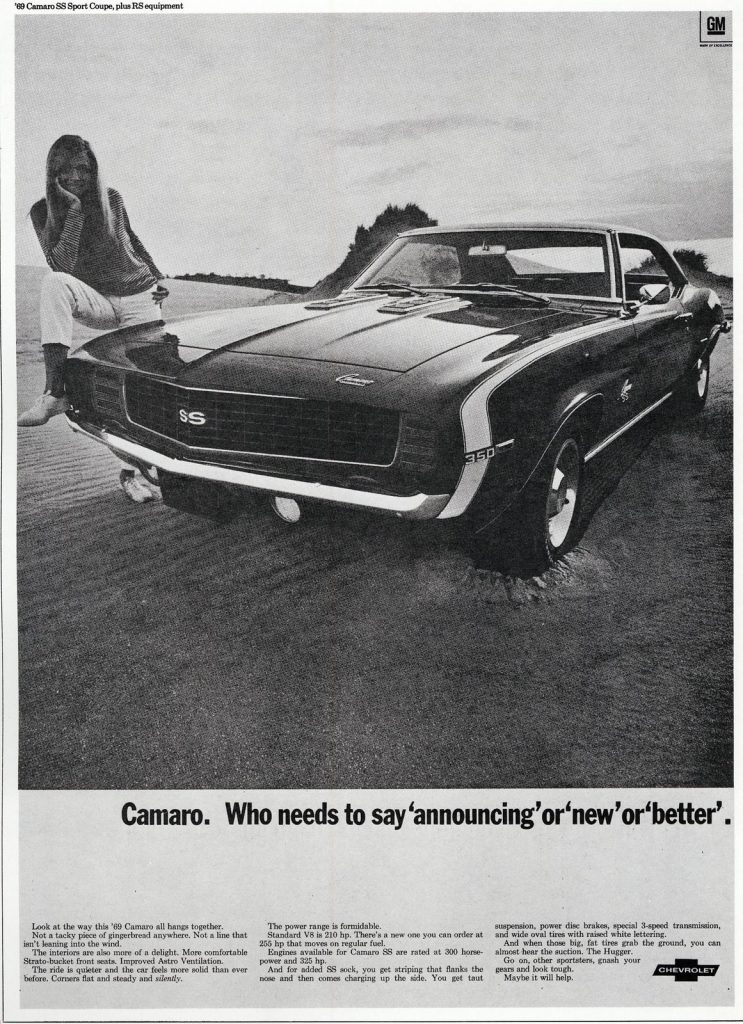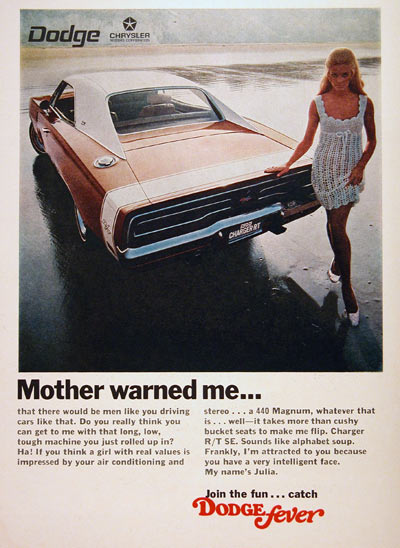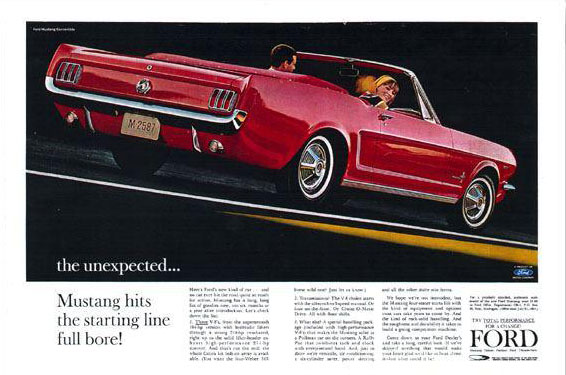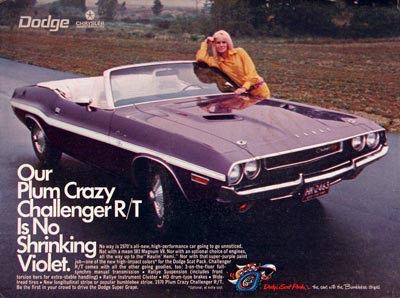This blog entry was originally written as part of a graduate class assignment, and was incorporated into my book Power Under Her Foot: Women Enthusiasts of American Muscle Cars.
Women’s participation in muscle car culture from 1964 to 1973 is, for the most part, undocumented in scholarship as well as popular culture. Scholars such as Margaret Walsh (2006) suggest that young women took part in cruising culture as observers or passengers. Their main objective, Walsh contends, was to be seen, “thereby enhancing their status with their female peers” (p. 9). Author Robert Genat (2009) asserts the average young woman had very little interest in muscle cars; rather, “they just wanted to be there” (p. 44). As Genat writes, “in that era only a few women owned cars and the cars they owned would be considered sporty – such as a LeMans hardtop, Mustang, or Camaro – with convertibles high on the list” (p. 44). Other accounts of the muscle car era rarely mention young women at all.
The absence of narratives from female participants in muscle car culture means that other sources must be relied upon for information. One of the more accessible resources is advertising. As Deborah Clarke (2007) writes, “Given the extent to which ads become engrained in our heads, they seem to have the widest and strongest impact in shaping our awareness of cars and car culture” (p. 7). However, rather than indicate how young women participated in muscle car culture, advertisements are more indicative of what the auto industry, and American culture at large, thought women’s role in muscle car culture should be. As Jennifer Wicke, author of Advertising Fictions, observed, “Advertisements are cultural messages in a bottle” (quoted by Clarke, 2007, p. 8).

In muscle car print ads produced from 1964 to 1973, young women are presented in one of four roles. The most common is that of “prop.” Young women called upon to fulfill this role are often positioned strategically to attract the male buyer as well as to associate the automobile with sex. While automobiles from the 1950s were often considered feminine in form, their curves reminiscent of the female body, the muscle car, as long, lean, powerful, and fast, suggested another form of sexual conquest. Stephen Bayley (1986), in Sex, Drink and Fast Cars, argues that in the mind of the male driver, a fast car demonstrates sexual prowess. As Bayley contends, “Driving cars fast is an act of recklessness which […] recaptures some elements of the thrill of adolescent sex” (p. 32). The young woman in the 1969 Chevy Camaro print ad is perched on the passenger side of the vehicle so as not to be confused with the driver. The ad copy does not refer to her in any way; her presence is merely decorative.

While the possibility of sexual conquest is alluded to when women appear as props, the role of the young woman as “prize”, demonstrated in an ad for the 1969 Dodge Charger, removes any doubt. The attractive blond, placed in front of the automobile, lifts her skirt as both an invitation and a promise. The copy reads, “Do you really think you can get to me with that long, low, tough machine you just rolled up in? “ The answer, of course, is “yes.” Witzel and Bash (1997), students of the California cruising scene, assert that the young men who participated in muscle car culture understood that driving a fast and racy car was the most effective way to attract young women. “Without a doubt,” write Witzel and Bash, “a cool car was a prerequisite to get girls and get laid” (p. 23).

Automotive scholars, such as historian Margaret Walsh (1986), suggest that the most common and preferred role of the young woman in muscle car culture was that of passenger. Understanding that only boys could raise a girl’s status among teenage peers, young women sought out young men in cool cars as a means to do so. Muscle car advertisements, such as that promoting the red Mustang convertible, often show attractive young women in the passenger seat. However, while the woman looks back to make sure she has been “seen,” the intent of such advertising is not to raise the status of the woman, but rather, that of the young man behind the wheel.

In advertising from the muscle car era, women are rarely presented as drivers. While Mustang occasionally featured women in the driver’s seat, it was to promote the non-muscle, non-performance, small V-6 engine models. In period ads for the Dodge Challenger – Chrysler’s entry into the “pony car” market – as well as the Dodge Charger, the position of the young woman on the driver’s side alludes to, but does not confirm, that the vehicle might be attractive to the female driver. The availability of the Dodge muscle car in “high impact” colors – such as Plum Crazy and Panther Pink pictured here – has made Dodge vehicles a very popular choice among today’s female classic muscle car owners. The owner of a classic Panther Pink 1971 Dodge Challenger convertible revealed that when growing up, she had coveted the Challenger owned by her boyfriend’s older sister. Her comments suggest that while young men may have perceived the attractive woman in either the Charger and Challenger ad as one of the spoils of owning such a vehicle, young women, in fact, may have seen in her the possibility of themselves as competent and capable muscle car drivers.
As Deborah Clarke (2007) suggests, advertising has had a significant impact in shaping our perceptions of women’s place in muscle car culture. However, while images of young women as props, prizes, and passengers assume women occupied peripheral roles, the Dodge Charger and Challenger ads suggest that women may have also been considered potential customers, i.e. “prospects.” If, as Clarke contends, advertising has considerable impact in shaping our awareness of cars and culture, then young women of the muscle car era could have very well imagined themselves as owners of Panther Pink or Passion Purple muscle cars. While most women lacked the financial means to purchase such vehicles in their youth, many, as aging baby boomers, have now acquired the means to own and drive the car they desired over 40 years ago.

Bayley, S. (1986). Sex, drink and fast cars. New York: Pantheon Books.
Clarke, D. (2007). Driving women: fiction and automobile culture in twentieth-century America. Baltimore: Johns Hopkins University Press.
Genat, R. (2010). Woodward Avenue: cruising the legendary strip. North Branch, MN: CarTech.
Walsh, M. (2006). At home at the wheel? The woman and her automobile in the 1950s. Paper presented at The Third Eccles Centre for American Studies Plenary Lecture given at the British Association of American Studies Annual Conference.
Witzel, M.K. & K. Bash. (1997). Cruisin’: Car culture in America. Osceola, WI: MBI Publishing Company.